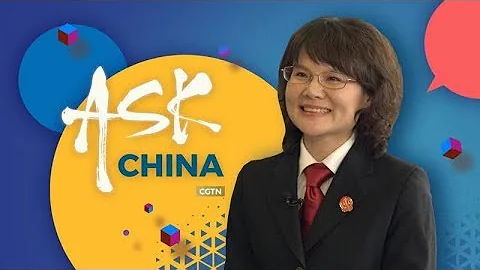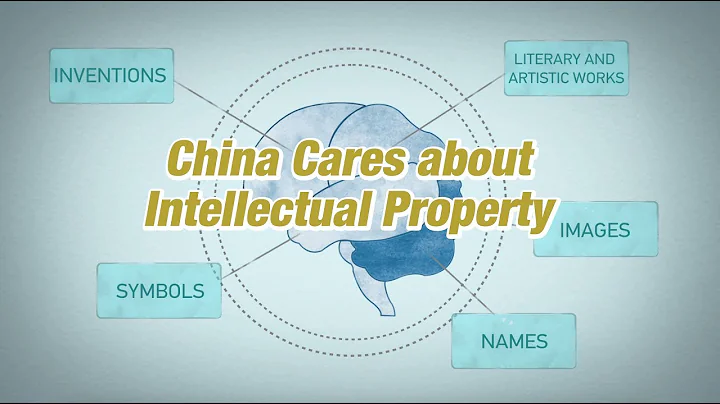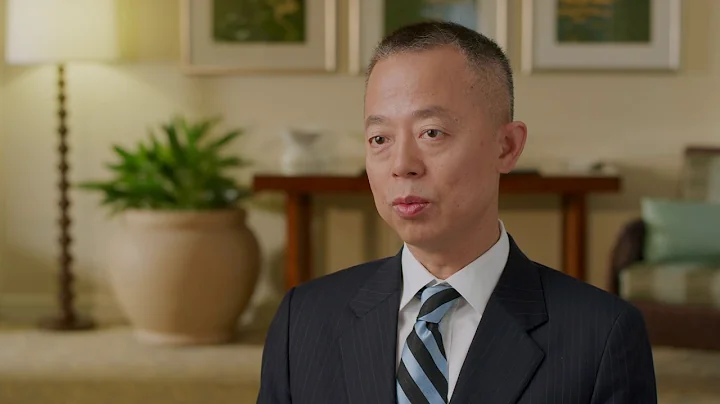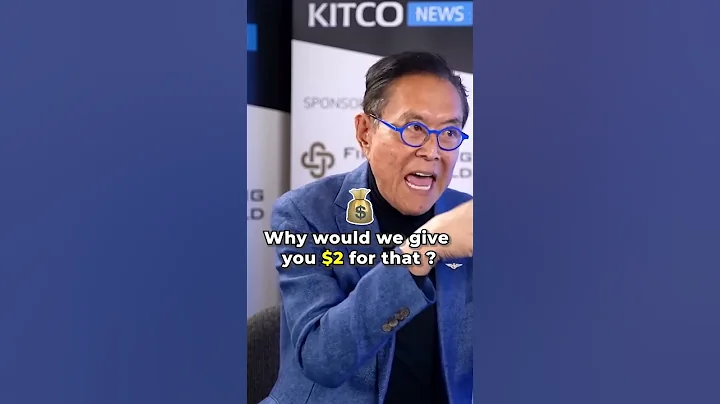
In November 2021, the Supreme People’s Procuratorate and Intellectual Property Office organized a hearing for all parties and five well-known experts in the domestic intellectual property field.
The results of this case have played a legal guidance and demonstration role in the legal application of issues related to similar goods, similar trademarks and trademark renewal registration in the field of trademark authorization and rights confirmation:
The judgment of similar goods refers to the function, use, and Products that have the same production department, sales channel, consumer target, etc., or that are generally believed by the relevant public to have a specific connection and are likely to cause confusion. For the judgment of similar products, you can use the auxiliary tool "Distinguishing Table" as a reference.
Judgment of similar trademarks To determine whether two trademarks are similar, you can compare the glyphs, pronunciations, meanings of their words, the composition and color of graphics, or the overall structure of the combination of their respective elements.
Judgment of trademark renewal registration Trademark registrants enjoy independent trademark exclusive rights for different registered trademarks, and there is no natural continuity relationship between their successively registered trademarks.
When you think of "Mona Lisa", what do you think of first? Leonardo da Vinci , world-famous paintings, mysterious smiles...
This painting created in the 16th century is now a household name, and many companies have also registered trademarks with the characters and musical notes of "Mona Lisa", hoping to use it. Its high public familiarity has brought popularity to the product itself, and there have been many disputes caused by it.
On June 14 this year, after the Supreme People's Procuratorate protested and the Supreme People's Court ordered the Beijing High Court to retry, an administrative dispute involving the "Mona Lisa" trademark dispute finally came to an end after 10 years. The court changed its judgment: revoking the original first and second instance judgments and rejecting the claim of the first instance plaintiff Hechang Group Co., Ltd. (hereinafter referred to as Hechang Group).
It is reported that this case is the first administrative litigation case in which a protest was filed and the verdict was successfully changed since the establishment of the Supreme People’s Procuratorate’s Intellectual Property Office (hereinafter referred to as the Supreme People’s Procuratorate’s Intellectual Property Office). “The results of this case have played a legal guidance and demonstration role in the application of laws on issues such as similar goods, similar trademarks and trademark renewal registration in the field of trademark authorization and confirmation, and demonstrated that the procuratorial organs have increased their supervision of intellectual property administrative litigation cases and handled them with cases. and actively participate in comprehensive social governance, focusing on the construction of administrative and judicial connection mechanisms, promoting the unification of intellectual property authorization and confirmation review standards and judicial adjudication standards,” said the relevant person in charge of the Supreme People’s Procuratorate and Intellectual Property Office.
A few days ago, the prosecutor in charge told reporters about the 10-year dispute in this case against .
To file a trademark dispute application to protect the value of the trademark
Back in December 1999, a sports equipment company filed an application with the former State Administration for Industry and Commerce Trademark Office (this function is now included in the State Intellectual Property Office ) Application for registration of the "Mona Lisa" trademark (hereinafter referred to as the "Mona Lisa" trademark). After review, the trademark complied with the provisions of the Trademark Law and regarding trademark application and registration. In April 2001, the Trademark Office approved the application for registration of the "Mongolian" trademark. According to the then " similar goods and services classification table " (hereinafter referred to as the "differentiation table"), the "Meng" trademark was approved for use in category 11 steam bath equipment, sauna equipment, shower equipment, bathroom fixtures and other products superior.
Since then, the "Meng" trademark has been transferred several times and was transferred to the names of Hongxin Building Materials Company (hereinafter referred to as the Building Materials Company) and Hongxin Sanitary Ware Company (hereinafter referred to as the Sanitary Ware Company).
However, building materials companies and sanitary ware companies discovered that there is another "MMONALISA" trademark (hereinafter referred to as the "M1" trademark) on the market that was registered later than the "Mongolian" trademark but also contains the pronunciation of "Mona Lisa". The products bearing this trademark overlap with the products sold by the company, which may cause confusion among consumers and damage the commercial value of the company's own trademark.
In March 2012, a building materials company and a sanitary ware company filed a dispute application with the Trademark Review and Adjudication Committee of the former State Administration for Industry and Commerce (this function has now been assigned to the State Intellectual Property Office), requesting that the "M1" trademark be revoked.After review, the Trademark Review and Adjudication Committee found that the "M1" trademark was applied for registration by Hechang Group to the Trademark Office in November 2004, and was approved for registration in July 2007. According to the "Distinction Table" at that time, it was approved for use in the 11th Products such as lamps, cooking utensils, pressure cookers (electric pressure cookers), bathrooms (flush toilets), toilets, faucets, etc.
According to Article 28 of the " Trademark Law of the People's Republic of China " (hereinafter referred to as the 2001 Trademark Law) amended in 2001, the Trademark Review and Adjudication Board believes that the goods approved for use of the "M1" trademark constitute the goods approved for use of the "Mongolian" trademark. As for similar trademarks used on similar goods, it was ruled that Hechang Group's "M1" trademark should be revoked on cooking utensils, pressure cookers (electric pressure cookers), bathrooms (flush toilets), and toilets, and maintained on the remaining goods. Hechang Group was dissatisfied with the ruling and filed an administrative lawsuit with the Beijing No. 1 Intermediate Court, requesting that the "M1" trademark continue to be registered on products such as bathrooms (flush toilets) and toilets, but not on products such as cooking utensils and pressure cookers (electric pressure cookers). Then ask for approval of registration.
After losing both the first and second trials, an application for supervision was filed
"During the first trial, Hechang Group introduced another trademark - 'M MONALISA' trademark (hereinafter referred to as the "M" trademark) into this case." The prosecutor in charge He told reporters that the "M" trademark was a trademark that a ceramic company applied for registration in July 1999 and was approved for registration in November 2000. According to the "Classification Schedule" at that time, the trademark was approved for use on Class 19 ceramic tiles and other commodities. At present, this trademark has been transferred to Hechang Group.
Hechang Group maintains that the "M" trademark has a high reputation in the field of ceramic tiles and is recognized as a well-known trademark. In the actual sales process, consumers have associated the bathroom (flush toilet) and toilet with the "M1" trademark with the "M" trademark. According to the "Guidelines for the Trial of Administrative Cases of Trademark Authorization and Confirmation by the Beijing Higher People's Court", the trademark registrant's basic registered trademark has gained a certain degree of popularity through use, which has led to the relevant public to use it on subsequent products of the same or similar type. If the identical or similar trademark applied for registration is linked to the basic registered trademark, and it is believed that the goods using the two trademarks come from the trademark registrant or have a specific relationship with the trademark registrant, the commercial reputation of the basic registered trademark can be applied to the trademark applied for registration later. continue. Therefore, the "M" trademark can be regarded as the prior basic trademark of Hechang Group's "M1" trademark, and the popularity of the "M" trademark can be extended to the "M1" trademark, thus making it "mong" with the building materials company and the sanitary ware company. Marks are clearly distinguished.
After hearing the case, the Beijing No. 1 Intermediate Court held that the two trademarks of Hechang Group, namely the "M" trademark and the "M1" trademark, are identical in graphics and English names, and the "M" trademark is approved to be used in the ceramic tile field. The bathrooms (flush toilets) and toilets approved for use under the "M1" trademark are all ceramic building materials. They are highly related in terms of function and use, and have the same sales channels and consumer targets. Therefore, the two types of goods are similar goods. . The "M" trademark has been recognized as a well-known trademark, and its high reputation has formed a stable relationship with the Hechang Group. Therefore, the high reputation of the "M" trademark can be extended to the "M1" trademark, making it more popular with building materials companies and sanitary ware companies. The "Meng" trademark has a significant difference in consumers' perception. In addition, the "M1" trademark logo of Hechang Group itself has an artistically processed M letter occupying most of the logo space, while the "Meng" trademark logo of the building materials company and the sanitary ware company only reads "Mona Lisa" in the upper half. , the lower part reads "MonaLisa", which is significantly different in visual effect and cannot be considered to be similar trademarks.
Therefore, the Beijing No. 1 Intermediate People’s Court finally believed that the commercial reputation of Hechang Group’s “M” trademark can be extended to the “M1” trademark, and approved the use of the “M1” trademark in bathrooms (flush toilets) and toilets. The "Meng" trademark used on products such as bathroom fixtures does not constitute a similar trademark used on similar products. Therefore, a judgment was made in February 2015 to revoke the ruling made by the Trademark Review and Adjudication Board and make a new ruling.
The Trademark Review and Adjudication Board, the building materials company, and the sanitary ware company were dissatisfied and appealed to the Beijing High Court. In January 2016, the court’s second-instance judgment rejected the appeal and upheld the original verdict. Later, the building materials company and the sanitary ware company applied to the Supreme Court for reexamination and were rejected again. In desperation, the building materials company and the sanitary ware company applied to the Beijing Municipal Procuratorate for supervision, and the Beijing Municipal Procuratorate requested the Supreme People's Procuratorate to protest the case.
Convene an expert hearing and start the supervision process
After accepting the case, the Supreme Procuratorate and Intellectual Property Office found that there were several disputes between building materials companies, sanitary ware companies and Hechang Group, with long time spans, legal relationships intertwined, and complex evidence. In order to ascertain the facts of the case and accurately apply the law, the Supreme People’s Procuratorate’s Intellectual Property Office conducted a search for similar cases and systematically sorted out the disputes between the two parties.
"We relied on the China Judgment Document Network to conduct a network-wide search for similar cases involving both parties, and classified the retrieved similar cases according to their degree of similarity, and finally identified 12 judgments that were highly similar to this case as supplementary facts. A persuasive combination of similar cases has been formed, which provides strong evidence for the supervision opinions of this case,” the prosecutor in charge told reporters, “At the same time, we have retrieved the file materials of the original court and conducted a comprehensive review of the case. Based on the review, we listened to the opinions of the parties many times to understand the trademark history and dispute background of both parties. "
Based on the above investigation and analysis, the Supreme People's Procuratorate and Intellectual Property Office believes that the focus of this case is whether the Hechang Group's "M1" trademark violates the 2001 trademark. Article 28 of the Law stipulates whether the "Meng" trademark of a building materials company or a sanitary ware company constitutes a similar trademark used on similar goods. The first instance, second instance, and retrial processes all focused on three key legal issues: How to identify similar goods? How to identify similar trademarks? How to confirm whether it constitutes a continuation of trademark registration?
Focusing on the disputed points, in November 2021, the Supreme People's Procuratorate and Intellectual Property Office organized a hearing for all parties and five well-known experts in the domestic intellectual property field. At the hearing, the parties fully stated their respective positions and opinions, displayed the relevant evidence of the case and the key issues in the dispute, and the expert hearing officers asked questions.
"Multiple relevant judgments have different standards and different understandings of applicable law, which has led to inconsistencies and conflicts in the judgment results. It is hoped that the Supreme People's Procuratorate can initiate supervision procedures on this case, unify judicial judgment standards, and establish unified judicial standards. Maintain the seriousness and authority of the judiciary. "Based on this case, on the issue of the disputed trademark ("M1" trademark), the cited trademark ("Meng" trademark) and the basic trademark ("M" trademark), the basic trademark is in this case. What role does it play in the case? What stance will it take on the growth of subsequent companies and the registration of extended trademarks? It should be said that legislators and judges have answers, but in this case, they may have deviated from the legislation of trademark law. The original intention and judicial practice suggest that the Supreme People’s Procuratorate initiates the supervision process.”
In the end, after discussion, the five expert hearing officers unanimously recommended that the Supreme People’s Procuratorate start the supervision process and perform its supervisory duties. After review, the Intellectual Property Office of the Supreme People's Procuratorate concluded that the case complied with the provisions for protest, and accordingly filed a protest with the Supreme People's Court in accordance with the law. The Supreme People's Court ordered the Beijing High Court to retry the case.
The three key issues were clarified and the protest was successful.
In March this year, the Beijing High Court held a public hearing on the case. During the trial, the court, procuratorial organs, and parties concerned jointly clarified three major issues regarding the case: similar goods judgment, similar trademark judgment, and trademark registration renewal judgment.
Judgment about similar products. Similar goods refer to goods that are identical in terms of functions, uses, production departments, sales channels, consumer objects, etc., or that are generally believed by the relevant public to be specifically related and likely to cause confusion. For the judgment of similar products, you can use the auxiliary tool "Distinguishing Table" as a reference.This "Distinction Table" is based on the "International Classification of Goods and Services for Trademark Registration" provided by the World Intellectual Property Organization by the national trademark registration and management agency. It summarizes my country's practical experience in trademark examination and management, extensively solicits opinions from various departments, and combines it with my country's Consumption habits, which are compiled by combining certain goods or services that have specific connections and are prone to misunderstanding, can be used as a reference for administrative and judicial authorities to determine similar goods or services when handling trademark cases.
In this case, the bathroom (flush toilet) approved for use by Hechang Group's "M1" trademark, the toilet and building materials company, and the bathroom fixtures approved for use by the "Meng" trademark of the sanitary ware company all have the functions and purposes of sanitary equipment; in In terms of sales channels, both products exist in the decoration market, and are generally placed in the same or adjacent sales areas; in terms of consumer targets, the consumer groups they face are the public with hygienic needs; in the "Distinction Table" , washrooms (water closets) and toilets belong to Group 1109 under Class 11, and bathroom fixtures also belong to Group 1109 under Class 11. Therefore, the two are identical in terms of functions, uses, sales channels, consumption objects, and divisions in the "Schedule of Differentiation", and constitute similar goods.
The original first and second-instance judgments did not recognize goods belonging to the same category and the same group as similar goods, which was a reverse breakthrough of the "Table of Distinctions". "In judicial practice, even if there are breakthroughs in the "Schedule of Classification", most of them are positive breakthroughs, that is, goods belonging to two categories are identified as Similar goods, as in this case, if goods that belong to the same category and the same group are not recognized as similar goods, it is a reverse breakthrough," the prosecutor in charge explained to reporters.
About the judgment of similar trademarks. To determine whether two trademarks are similar, you can compare them in terms of the glyphs, pronunciations, meanings of the characters, the composition and color of the graphics, or the overall structure of the combination of their respective elements.
"In this case, the 'M1' trademark of Hechang Group consists of the letters 'M' and 'MONALISA'. The 'Meng' trademark of the sanitary ware company and the building materials company consists of the Chinese character 'Mona Lisa' and the letters 'MonaLisa'. Although The letter M in the 'M1' trademark has been artistically processed and occupies a larger area, but the 'M1' trademark and the 'Mongolia' trademark both contain the English word 'Monalisa', and the two have the same text composition. ' is translated as 'Mona Lisa' in Chinese. From the perspective of calling, both trademarks will be called 'Mona Lisa' by the relevant public, which will cause confusion. Therefore, the two constitute similar trademarks used on similar goods. "A prosecutor from the Beijing Municipal Procuratorate who attended the retrial court told reporters.
About trademark renewal registration. Trademark registrants enjoy independent trademark exclusive rights for different registered trademarks, and there is no natural continuity relationship between their successively registered trademarks.
An expert in the field of intellectual property explained: "There are two main cases of extended registration, one is the extension of the trademark itself, and the other is the extension of the category. Extended registration, especially cross-category extended registration, special attention should be paid to not extending it. Otherwise, it cannot be extended to the field of other trademarks.” In this case, Hechang Group’s “M” trademark was recognized as a well-known trademark in October 2006, and the application for registration of “M1” was in November 2004. That is to say, when the "M1" trademark was applied for registration, the "M" trademark had not yet become a well-known trademark, so the influence of the "M" trademark could not extend to the "M1" trademark. Moreover, the "Meng" trademark has been applied for registration on the "bathroom fixtures" product in 1999. Even if the "M1" trademark can become a cross-category extension registered trademark of the "M" trademark, it cannot be registered on products similar to the "Meng" trademark approved products. on the field.
On June 14 this year, the Beijing High Court made a retrial judgment revoking the original first and second-instance judgments. It believed that the first and second-instance judgments contained errors in the determination of facts and application of law. It revoked and upheld the ruling of the Trademark Review and Adjudication Board in accordance with the law. The Supreme People's Procuratorate successfully protested. By protesting the case, the procuratorial organ fully fulfilled its legal supervision responsibilities and effectively safeguarded the order of trademark registration and the legitimate rights of the obligee.
(The companies involved in the article are all pseudonyms)
Source: Procuratorate Daily





















